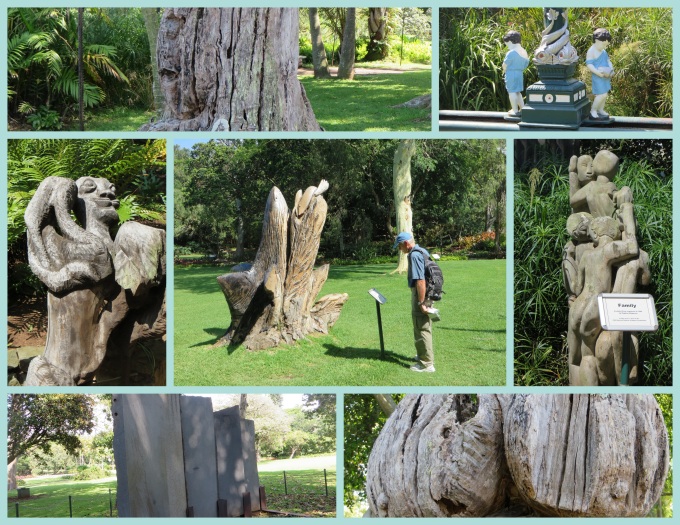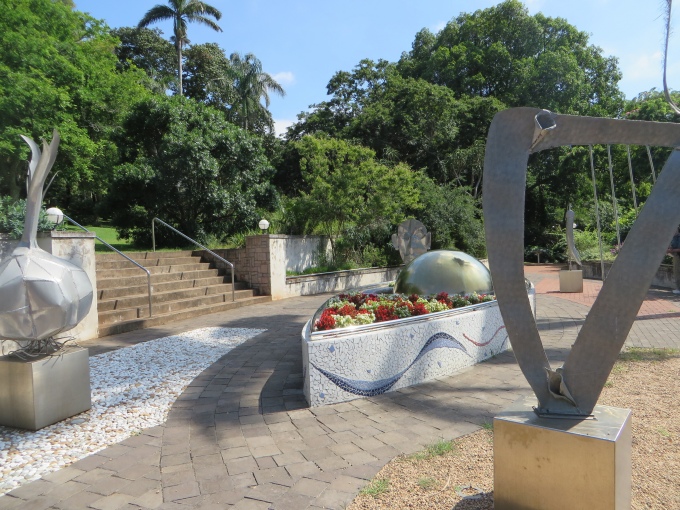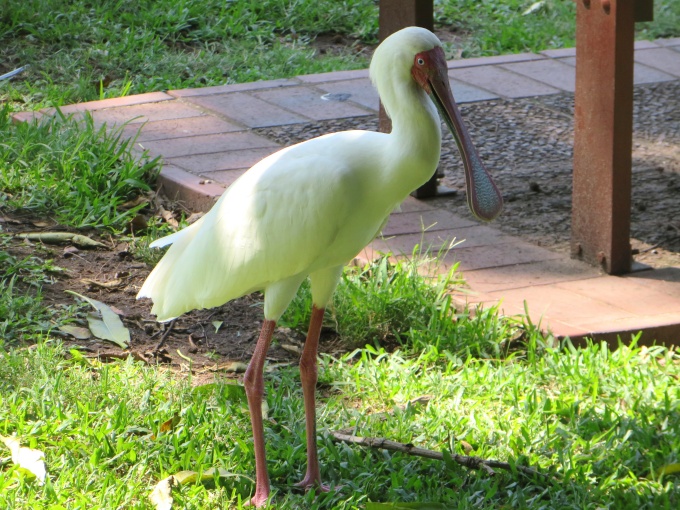Durban's Botanic Gardens
/In the midst of the chaos and hubbub of downtown Durban, sits the Durban Botanic Gardens, Africa's oldest surviving botanic gardens and Durban's oldest institution. Established in 1849, the gardens cover an area of about 37 acres, right in the middle of the city … a virtual oasis of serene, green, cool shady paths meandering midst flowers, plants and trees. We hadn't visited yet and it seemed just the thing to do on a hot, sultry, summer's morning.

After picking up a park map, we headed to the orchid house first. There are reputedly over 8,000 plants in the garden's orchid collection and the display of these delicate-looking, complex flowers was stunning.
There's quite a array of sculptures and statuary along the garden paths “playing a vital role in bridging the gap between nature and culture”. We found some pieces quite interesting and others … well, we kind of struggled with them and shrugged our shoulders.
We noticed what appeared to be an old brown ball just laying abandoned on the lawn and wondered who'd left it behind. It turned out to be the fruit of the cannonball tree (couroupita guianensis), an odd tree from Guiana with gorgeous, sweet-smelling flowers growing up its trunk. Despite all the botanic gardens we've visited over the years, we'd never seen a tree like this before.
The Garden of the Senses was interesting. It included stimuli for all the senses from the smell and taste of herbs and plants like rosemary, lavender, garlic and hot chili peppers to the feel of different textures under our feet (cobblestone, wooden deck, bricks and smooth pavement) and soft, velvety leaves that beckoned us to touch them. There were blooming flowers in a riot of color, as well as interesting sculptures … all eye candy. The sound of a babbling brook, a little waterfall gushing over rocks and a breeze brushing past rustling leaves were all auditory.
The Sunken Garden and the herb garden were pleasant, but so exposed to the hot sun that we didn't linger at either for very long.
At one end of the garden's lake was a beautiful lotus pond with flowers the size of dinner plates. The other end of the lake was particularly inviting with park benches under tall shady trees. Ducks and Egyptian geese paddled around in the water. We watched an African spoonbill male trying to entice a female with his dance moves, but she shunned him. In the trees above, we saw giant nests inhabited by other, presumably successful, spoonbills.
There was a host of “heritage trees”, some planted over 100 years ago. The oldest jacaranda in the country, planted in 1885, resides here as do several Wood's Cycads (encephalartos woodii), purportedly one of the rarest plants in the world. It looks kind of like a palm, but it's not. Unfortunately, it's not all that remarkable to look at, so unless you're looking for it, you pass right on by. Wood's Cycad has become the emblem and logo for the Durban Botanic Gardens.
We frittered away enough of the morning and it was time to head back to Nine of Cups … boat chores are never finished and they're always waiting.








